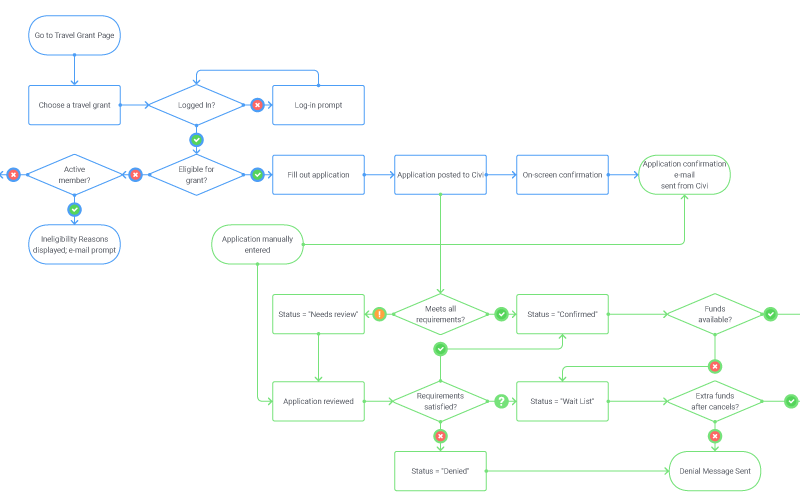MLA CRM Migration
product management | roadmapping | systems design
The challenge
The Modern Language Association is a nonprofit professional organization with more than 20,000 active members and various initiatives, including academic publishing, a large annual convention, and humanities advocacy work. In an effort to broaden the MLA’s coalition and increase member engagement, the organization wanted to be able to quickly and intelligently provide more personal outreach using a CRM as well as create more user-friendly and efficient user interfaces for various applications. But under the existing database schema, member information was difficult to access and act on, and legacy software development platforms created barriers for fast, flexible, and intuitive user experience design.

The goal
Migrate membership information, internal tools, and user-facing applications from a legacy system to a CRM for more personal engagement with members and improved user experience when using the MLA’s digital applications. In the process, improve and standardize our data design and software development best practices.
The process
After years of using a network of legacy platforms, a non-relational database schema, and several stalled attempts at gaining traction on the project, a new tiger team was assembled. I helped lead the team, providing perspective throughout the project, and integrating the needs of the Outreach department with the challenges of migrating a complex dataset.
The first critical step we took was to take a complete inventory of all internal and user-facing software applications that we built or maintained. We interviewed stakeholders and users to learn pain points, possible opportunities to combine or retire applications, and reasons they continued to use legacy applications. This led to the organization’s first complete documentation of the state of our software, which included SaaS applications, various software development vendors, legacy applications, and new, ongoing development work. For the first time, we were able to visualize all of our data dependencies and create the framework for migrating applications to interface with our CRM.

We then formed a timeline to move all of our data, rewrite our APIs, and redesign applications as needed based on data dependencies, business calendar, and staff needs. We published the migration plan for the entire to staff to see and contribute to, laying the foundation for a robust system of documentation, accountability, and transparency. Finally, we began the process of migrating the applications using Agile methodology.
The result
We were almost immediately able to alleviate pain points for the marketing and fundraising teams by providing new insights into member engagement and making it easy to analyze donor history and potential. Utilizing agile methodology allowed us to speed up the time of development as well as demonstrate success to stakeholders. We empowered and trained staff to use the new CRM and retire burdensome and deprecated administrative applications. After years of stalled attempts at leveraging the power of the CRM, we have finally begun to use its full potential as we continue to integrate more and more data and redesign applications on a more modern, future-proof software stack and implementing reusable components from the MLA Design System.